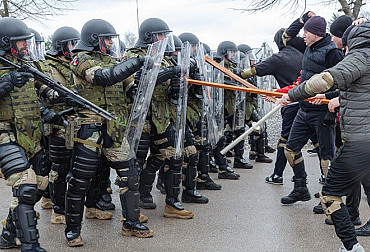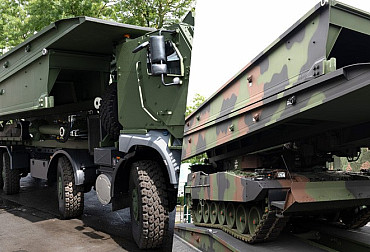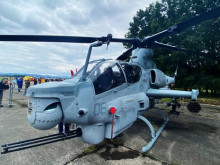Modernization of Czech artillery: Now or never
The delay in the purchase of new French howitzers is remotely reminiscent of other arms contracts, in which there have been and continue to be delays, and it is the soldiers themselves who carry the negative consequences in the end. In the case of artillery, there may be a threat not only to the very combat capability of the 13th Artillery Regiment, but also to other units that the artillery is to support.
Currently, the Czech artillery is armed with morally and technically obsolete vz. 77 DANA caliber 152 mm self-propelled cannon howitzers. As the name itself suggests, this howitzer was introduced into the armament of the then Army in 1977. Caliber 152 mm, which was the standard caliber under the Warsaw Pact, is already unsatisfactory. The howitzer can be modernized, but such a modernization would not bring the desired effect and especially a change in caliber. In order for other artillerymen to be able to perform fire support tasks with dignity, they simply need new howitzers.
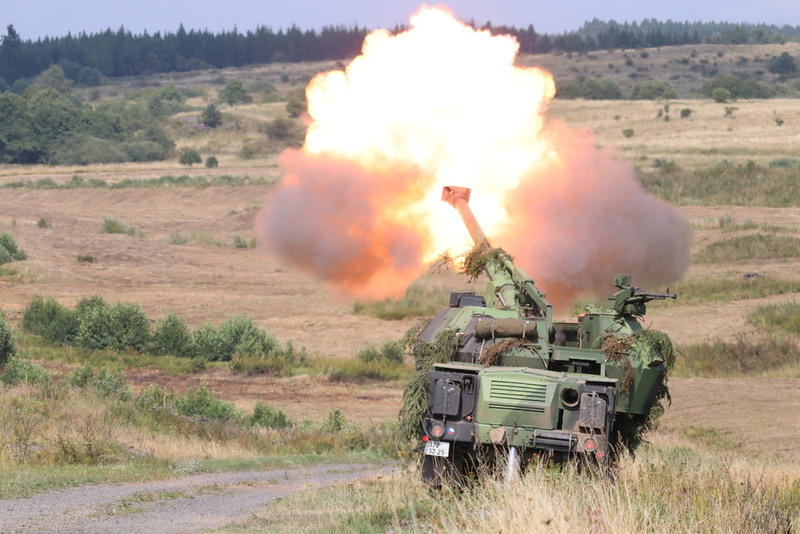
Picture: In the Czech Republic, the purchase of the CAESAR self-propelled howitzers as a replacement for the vz. 77 DANA self-propelled howitzers (pictured) is a priority among large acquisitions | Ministry of Defense of the Czech Republic
The Ministry of Defense answered our questions about the current situation of artillery and the outlook for the future:
What are the most serious problems that Czech artillerymen currently face in connection with the operation of DANA howitzers?
The main problem is the age of this equipment and its effects on the overall reliability and at the same time the difficult availability of some spare parts.
When does the Ministry expect the first pieces of CAESAR howitzers to be delivered?
The start of deliveries can be expected in 2025.
The new howitzers will also affect the operational capabilities of task forces based on the 4th Rapid Deployment Brigade and the 7th Mechanized Brigade. If the acquisition of new howitzers were delayed, it would affect the support of the 7th Mechanized Brigade. In connection with the armament of the mechanized brigade with new tracked combat vehicles, the question also arises regarding artillery reconnaissance. The original intention is to place reconnaissance equipment on the chassis of the new combat vehicles, however, due to the planned cuts, it is possible that the first victim will be the contract for new IFV and their specialized variants.
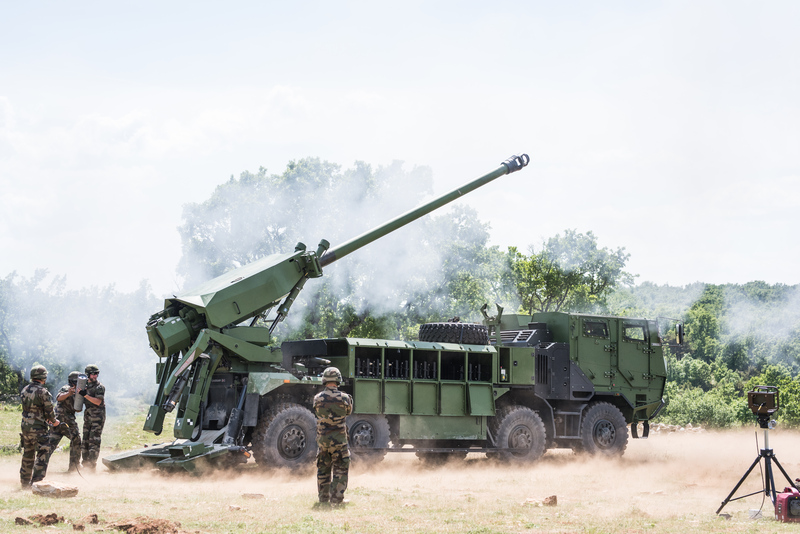 Picture: Caesar 8x8 Self-propelled howitzer | NEXTER / CC BY-NC-ND
Picture: Caesar 8x8 Self-propelled howitzer | NEXTER / CC BY-NC-ND
However, the modernization of artillery is not just about howitzers. The Ministry of Defense has signed a contract for the supply of TITUS (Tactical Infantry Transport & Utility System) armored vehicles. These will be supplied by the French NEXTER together with the Czech company Tatra Defense Vehicle (TDV). The 13th Artillery Regiment will receive TITUS vehicles in the MKKP modification - Place of Coordination of Fire Support. As planned the Army is to receive the first pieces of vehicles next year. The question remains what TITUS vehicles will be good for to the artillery if the unit does not receive new howitzers at about the same time. Another order related to the modernization of artillery is the Artillery Fire Control System. According to KVAČR 2030, the acquisition of this system is to take place in the years 2020-2023. In this case, the same question arises as for TITUS vehicles - what good would an integrated fire control system be if the artillerymen did not receive new howitzers?
.jpg)
Picture: TITUS belongs to the category of MRAV (Multi-Role Armored Vehicle) vehicles, which are characterized by strong armor and a high degree of crew protection, but at the same time, despite their weight, they have very good mobility and passability through difficult terrain. | Tatra Defense Vehicle / CC BY-NC-SA
Regarding the tender for the fire control system, we asked the Ministry of Defense at what stage the acquisition of a new fire control system for artillery (SRP) currently is and we were told the following: “Implementation takes place through a national integrator, the Military Technical Institute, a state enterprise. We are currently working on the assumption that the selection of the new SRP will be completed at the end of this year, or in the first months of next year."
One of the fundamental aspects of (not only) the modernization of artillery is also the support of domestic industry. Traditional companies such as CSG, VTÚ or Explosia will take part in the modernization of Czech artillery. From an economic point of view, these companies cannot be left in uncertainty in the context of contracts for the domestic army. The successful completion of the above-mentioned contracts will suitably support the domestic industry in the period after the coronavirus pandemic and thus partially start the Czech economy. In addition, references in the domestic army will help Czech companies to establish themselves in foreign markets, where they now have to compete with foreign products. Last but not least, it is also about strengthening national security in the area of arms supplies in times of crisis.
The last important point related to the overall modernization of the Army is the Czech credibility within the North Atlantic Alliance. This is not so much the proclaimed 2% of GDP spent on defense, but rather a positive signal to our allies in the Alliance that we are serious about defense and that our allies can count on us. In addition, the modernization of artillery is more or less in cooperation with European defense industry, which sends a positive signal to European allies and the Czech Republic is moving towards a reasonable diversification of the systems used, which eliminates dependence on one supplier or one specific country.
Given the stage reached in the modernization of the artillery - the Ministry of Defense has decided to purchase French howitzers and the production of TITUS armored vehicles is in full swing - this project needs to be completed successfully. There is not much missing for that. The project of modernization of artillery is interesting in that all participating actors - the Army, Alliance partners and domestic industry - will benefit from the successful completion. However, if the artillery is not modernized in the foreseeable future and the project is postponed due to the cuts, as stated in the 2011 White Paper on Defense, the accumulated modernization needs may arise again in a few years and will ultimately not be funded. The modernization will be constantly postponed, which will have a negative impact primarily on the operational capabilities of the Army, the condition of domestic industry and, ultimately, will significantly damage the already severely tested Allied confidence within the Alliance.















